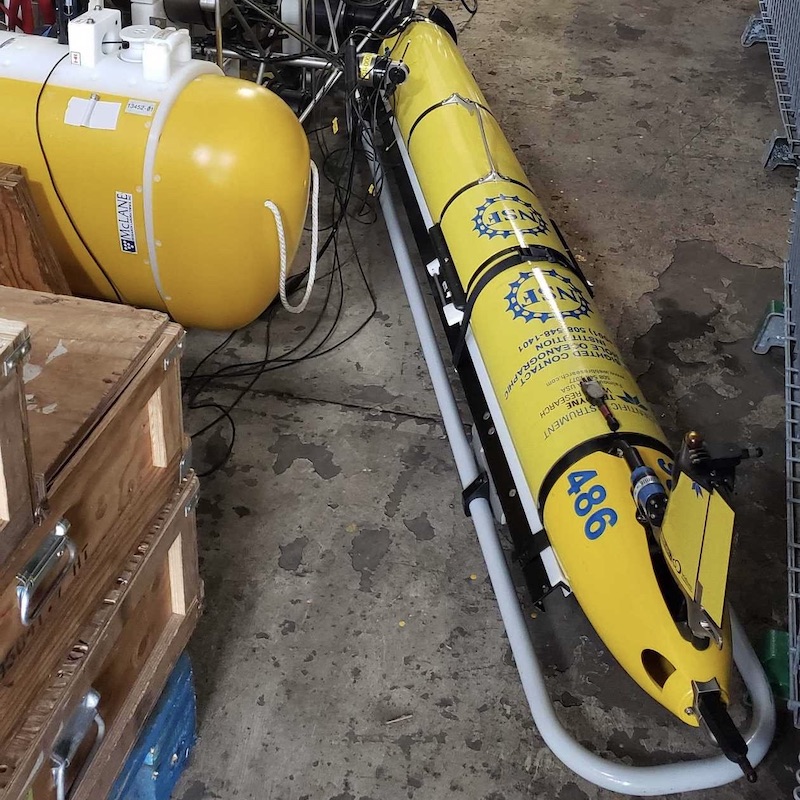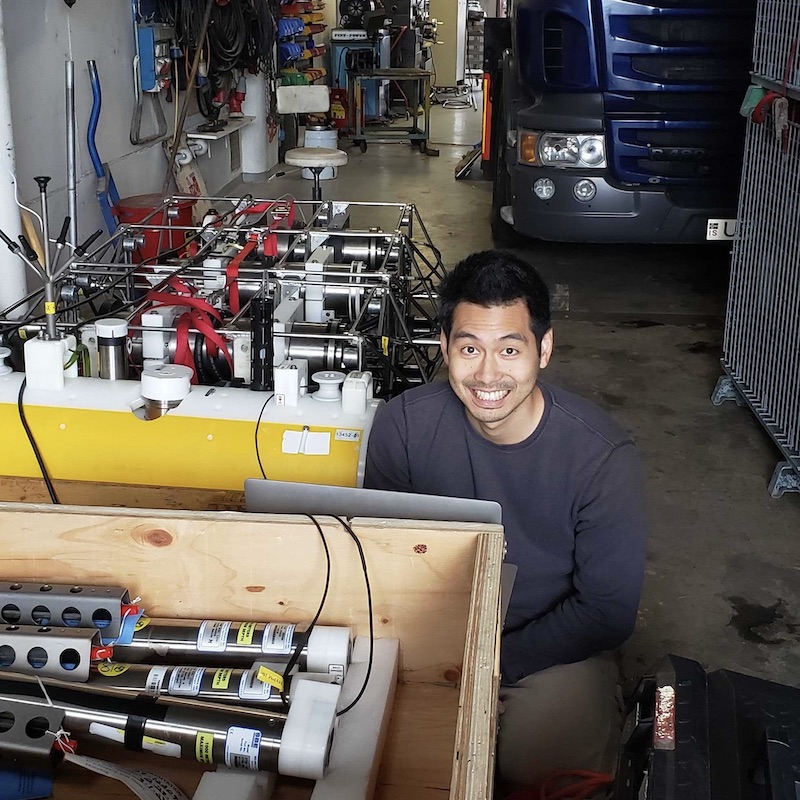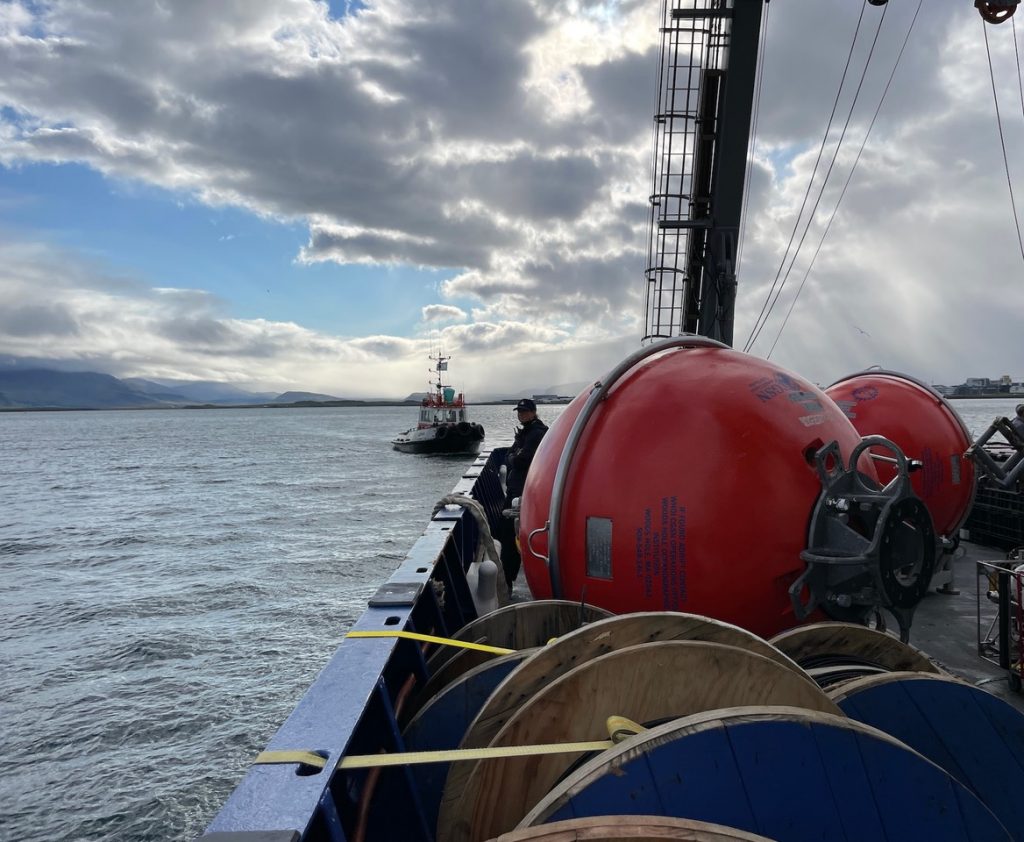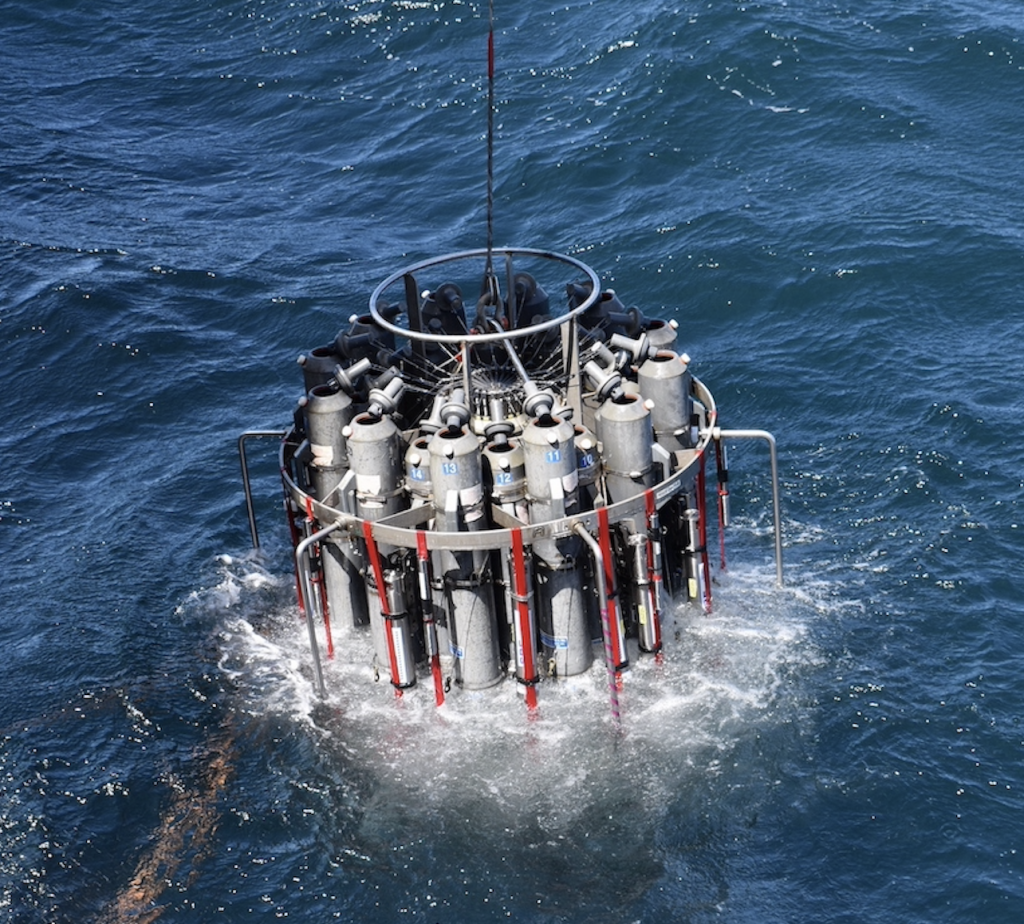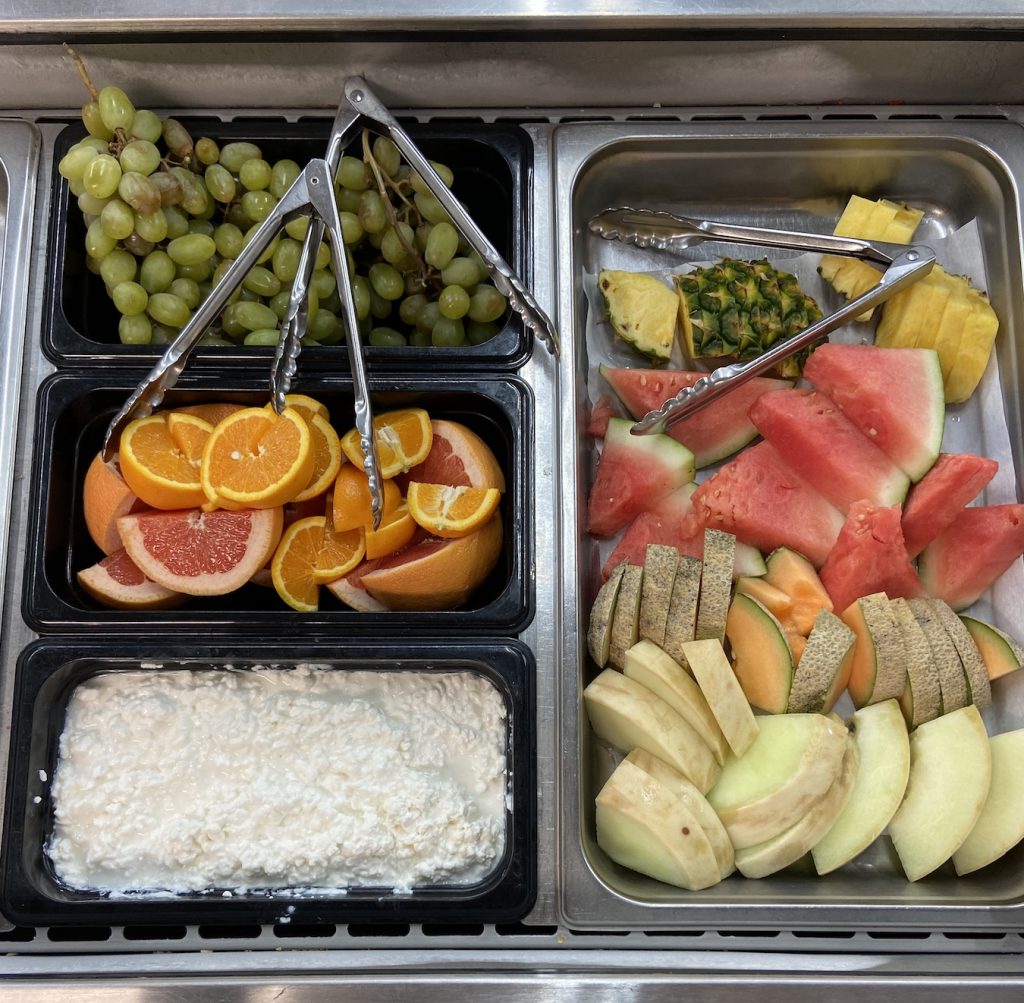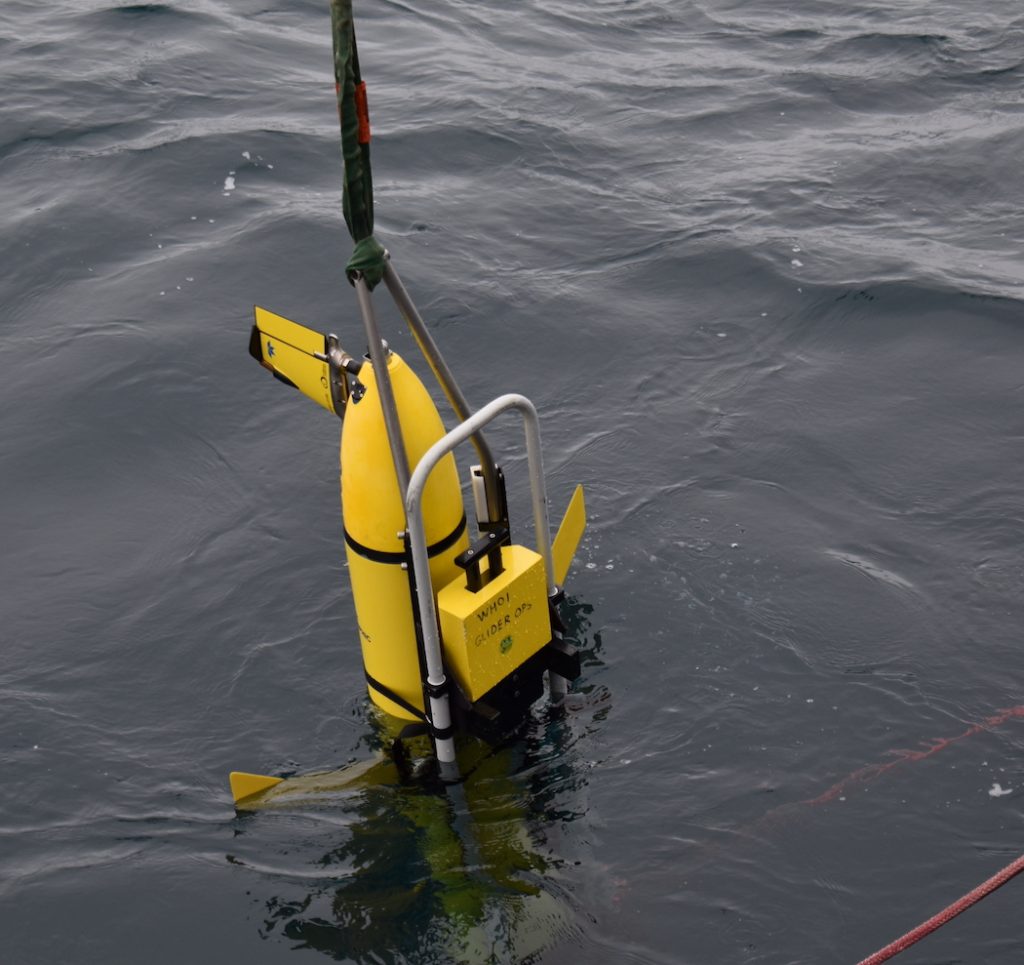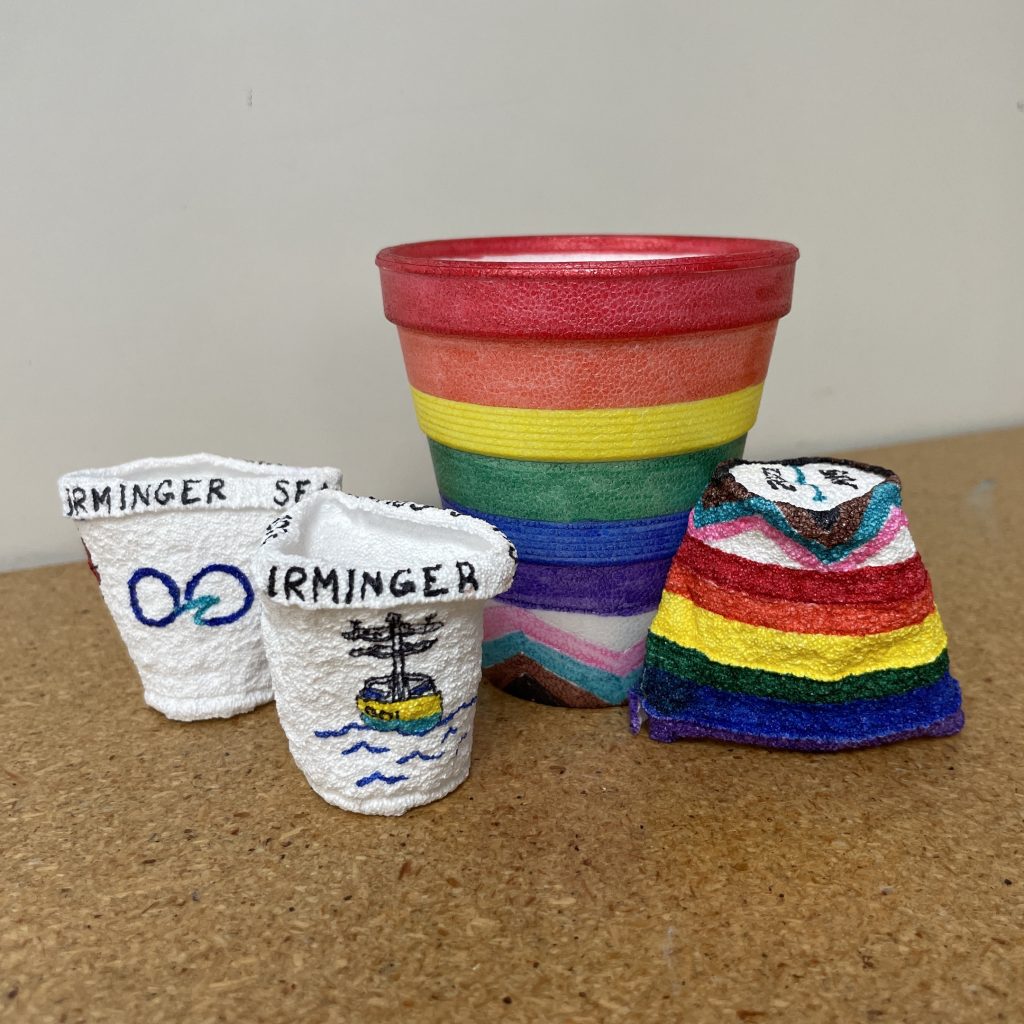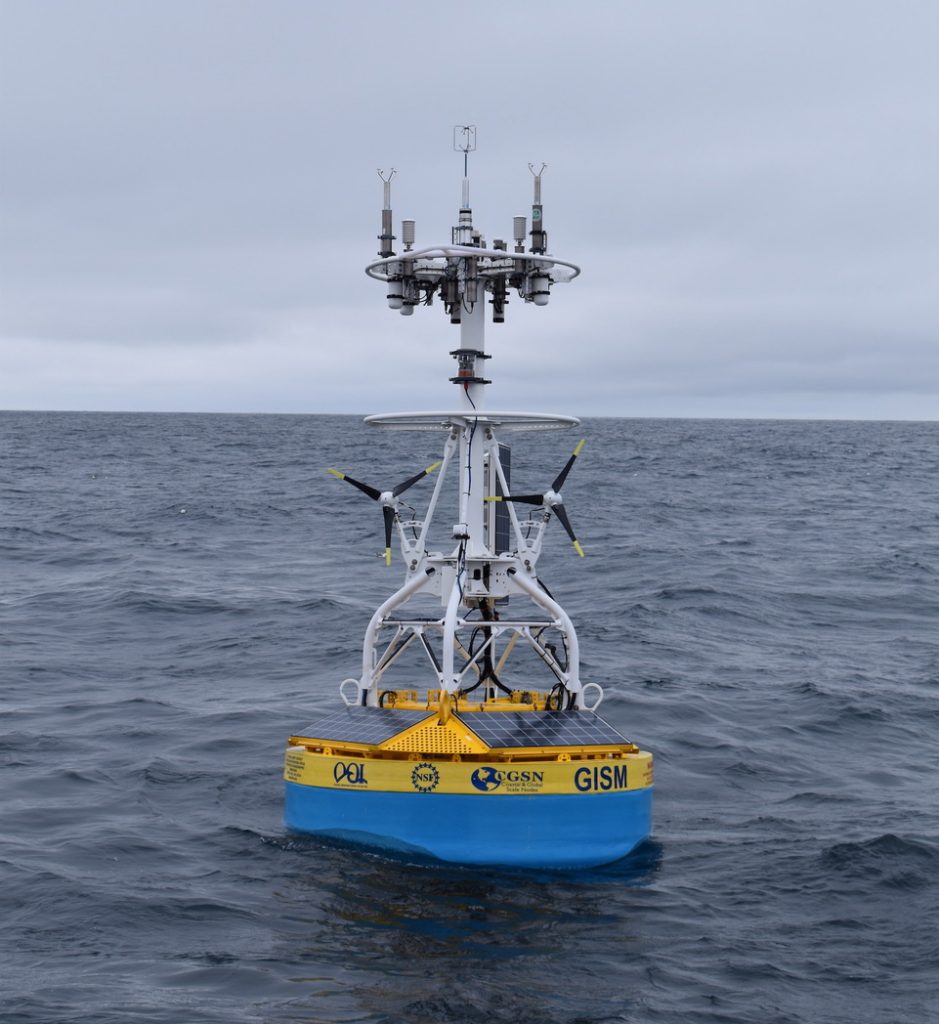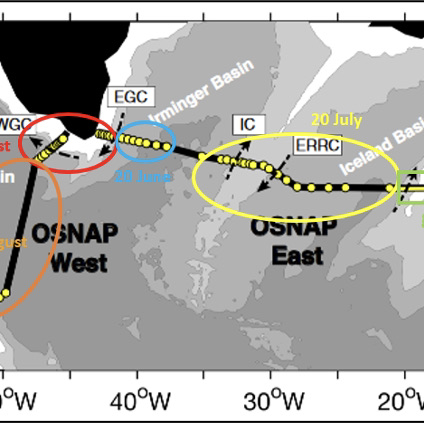Posts Tagged ‘Global Irminger Sea Array’
Getting Gliders Ready
Once the mooring build is complete, the mobilization team can focus on the mobile assets. Three gliders are planned for deployment at the Irminger Array and satellite and acoustic communications must be tested prior to mobilizing on the research vessel. The vehicles are placed outside and in proximity to the subsurface moorings to verify sending…
Read MoreBuild in Reykjavik
The Irminger cruise team continues to make progress building the moorings in Reykjavik, Iceland. The mooring systems are integrated and then “burned in.” This is a test period for the power, data, telemetry, and instrument systems to ensure everything is operational prior to loading the vessel. Above James Kuo and Irene Duran verify the operation…
Read MoreMobilization Started
The Irminger mobilization has begun! The team is in Reykjavik, Iceland building and testing the Irminger Array Global Surface Mooring, Hybrid Profiler Mooring, and Flanking Moorings. John Lund, the cruise Chief Scientist, and his team are assembling the Global Surface Mooring buoy well and tower. The well houses the power, data collection, and telemetry systems…
Read MoreInto Reykjavik, Iceland
After a successful cruise and 27 days at sea, the Irminger 9 expedition pulled into Reykjavik, Iceland. Although it was a great cruise, the team was happy to be headed home. Our gear was off-loaded and the ship was prepared for the next cruise – another OSNAP expedition in the Irminger Sea area. The pilot…
Read MoreCTD casts
CTD casts are performed alongside many other scientific operations in order to validate incoming data and to calibrate instruments, they can also be performed in sea and weather conditions when other science operations like mooring deployments and recoveries cannot. Regardless of the sea state, performing these casts require teamwork and communication between the science party,…
Read MoreFood for a month
Feeding a ship’s worth of people three meals per day (plus snacks), planning meals, cleaning, and organizing stores, is constant work. Running the kitchen, or “galley” on the R/V Neil Armstrong takes approximately 35 total person-hours per day, which is typically divided between three people. On the Irminger 9 cruise the galley was staffed by steward…
Read MoreGlider missions
The OOI Irminger Sea Array consists of three mooring sites in a triangular with sides ~30 km long. The Surface Mooring at one corner of the array communicates to shore via satellite. But the other three moorings (two moorings share one of the sites) do not have a surface expression, so they need another way…
Read MorePressure effects
Although the team on the Irminger Sea 9 cruise is working hard every day – including weekends and holidays – they do try to throw in a little fun from time to time. A favorite past time on oceanographic cruises is decorating styrofoam cups and “shrinking” them by sending them into the deep ocean. On…
Read MoreFirst mooring deployed
After eight days transiting from Woods Hole to the Irminger Sea, the team is happy to be there and ready to get to work. The Surface Mooring was the first mooring deployed. It consists of a large surface buoy with meteorological instrumentation, satellite telemetry, and wind turbines and solar panels to generate power, and instrumentation…
Read MoreLink to OSNAP blog
A team from OSNAP (Overturning in the Subpolar North Atlantic Program) is also onboard the Armstrong, working alongside OOI colleagues. The OSNAP team is conducting sampling and checking OSNAP moorings in the region. In her first blog post, OSNAP researcher Heather Furey provides an overview of their mission over the next month and explains how…
Read More